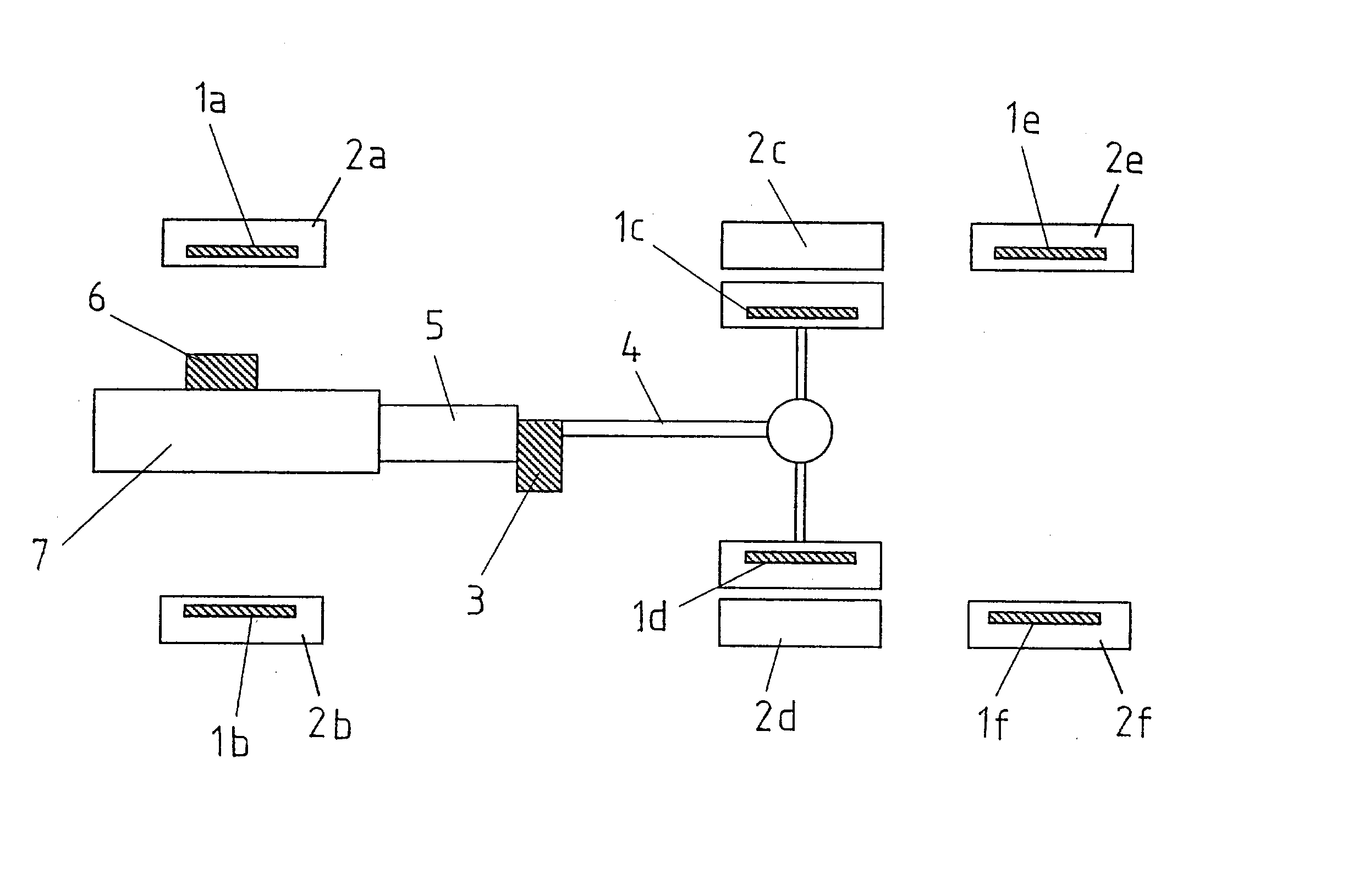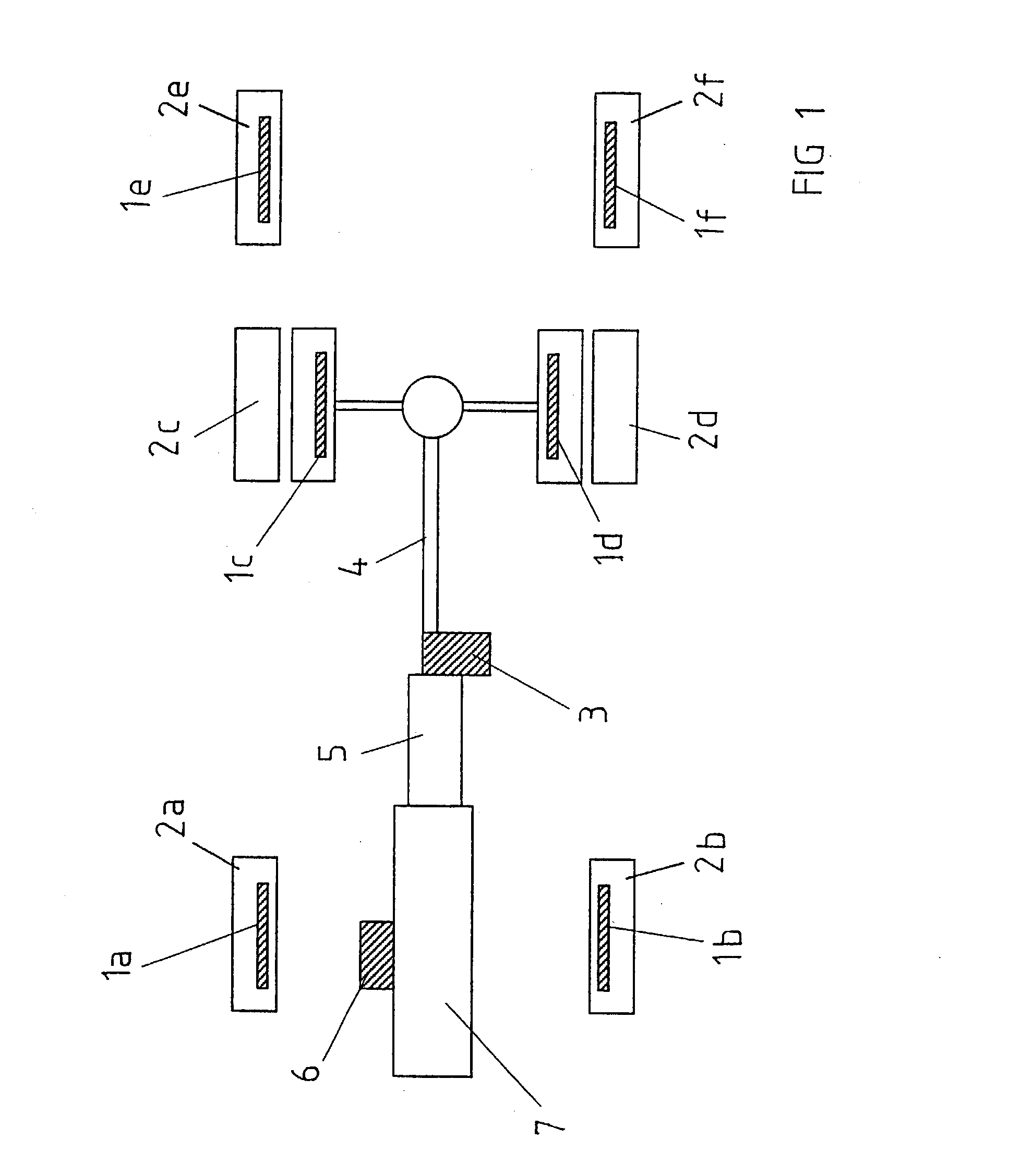Device to control a brake arrangement and a brake system for a heavy vehicle with such a brake arrangement
a technology for heavy vehicles and brake systems, which is applied in the direction of brake systems, vehicle components, transportation and packaging, etc., can solve the problems of air control pressure drop, reduce the braking effect, and reduce the risk of so-called heat fading, so as to reduce the wear of the brake lining and accelerate the braking response.
- Summary
- Abstract
- Description
- Claims
- Application Information
AI Technical Summary
Benefits of technology
Problems solved by technology
Method used
Image
Examples
Embodiment Construction
[0022] FIG. 1 depicts schematically the location of the available brakes on a heavy vehicle such as a truck. The vehicle contains a main brake, which includes braking devices 1a-f arranged to act on the vehicle wheels 2a-f. The braking devices 1a-f can consist of pneumatic disc brakes, and in this case the main brake comprises the equipment needed to press the brake pads of the respective disc brakes against the discs that rotate with the wheels 2a-f in question. The vehicle contains an auxiliary brake in the form of a retarder 3 that generates outgoing braking torque using viscous friction. The retarder 3 can be of the type described in the introductory description. The retarder 3 is thus connected to the propeller shaft 4 and to the vehicle gearbox 5 and brakes only the driven wheels 2c-d. The vehicle also contains a further auxiliary brake in the form of an exhaust brake 6. The exhaust brake 6 can be of the type described in the introductory description. The exhaust brake 6 is co...
PUM
 Login to View More
Login to View More Abstract
Description
Claims
Application Information
 Login to View More
Login to View More - R&D
- Intellectual Property
- Life Sciences
- Materials
- Tech Scout
- Unparalleled Data Quality
- Higher Quality Content
- 60% Fewer Hallucinations
Browse by: Latest US Patents, China's latest patents, Technical Efficacy Thesaurus, Application Domain, Technology Topic, Popular Technical Reports.
© 2025 PatSnap. All rights reserved.Legal|Privacy policy|Modern Slavery Act Transparency Statement|Sitemap|About US| Contact US: help@patsnap.com



